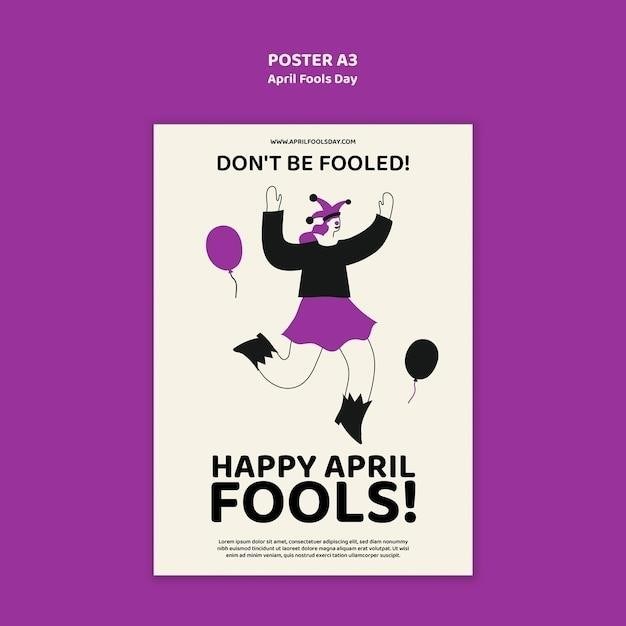
The “Truly Tasteless Jokes” Phenomenon
The “Truly Tasteless Jokes” series, penned by Ashton Applewhite under the pseudonym Blanche Knott, gained immense popularity in the 1980s. This collection of off-color humor, first published in 1982, tackled taboo topics with a controversial and often offensive brand of humor, leading to widespread cultural impact and a dedicated fan base.
The Origins of “Truly Tasteless Jokes”
The “Truly Tasteless Jokes” phenomenon began in 1982 with the publication of the first book in the series, “Truly Tasteless Jokes,” by Ashton Applewhite, who wrote under the pen name Blanche Knott. This collection of jokes, known for their controversial and often offensive nature, quickly gained notoriety and became a cultural phenomenon. The book’s success was driven by its willingness to push boundaries, tackle taboo subjects, and provide a platform for dark humor, all of which resonated with a segment of the population seeking a different kind of laughter. The book’s popularity stemmed from its audacious approach to humor, which appealed to a wide audience seeking a break from traditional, polite comedy.
Blanche Knott⁚ The Pen Name Behind the Success
Blanche Knott, the pen name adopted by Ashton Applewhite, became synonymous with the “Truly Tasteless Jokes” series. This pseudonym played a crucial role in the books’ success, creating a sense of mystery and intrigue around the author’s identity. While Applewhite’s real name was eventually revealed, the use of Blanche Knott allowed the books to transcend the author’s personal identity and become a cultural phenomenon in their own right. The pen name facilitated a separation between the author and the content, allowing readers to engage with the humor without associating it directly with Applewhite’s personal life. This strategic use of a pseudonym contributed significantly to the “Truly Tasteless Jokes” series’ enduring popularity and cult status.
The Cultural Impact and Legacy
The “Truly Tasteless Jokes” series left an indelible mark on popular culture, becoming a symbol of irreverent humor and pushing the boundaries of what was considered acceptable in mainstream comedy. The books’ success sparked a trend of similar publications, with countless other collections of off-color jokes emerging in the wake of their popularity. “Truly Tasteless Jokes” contributed to a broader shift in societal attitudes towards humor, demonstrating that audiences were willing to embrace more provocative and controversial content. While the series faced criticism for its offensive nature, it also sparked important conversations about the limits of humor and the role of satire in society. The legacy of “Truly Tasteless Jokes” continues to resonate today, reminding us of the power of humor to challenge norms and provoke thought, even when it treads on uncomfortable territory.
Exploring the Content of “Truly Tasteless Jokes”
The “Truly Tasteless Jokes” series is known for its unapologetic exploration of taboo subjects, pushing the boundaries of what is considered acceptable in humor.
The Taboo Topics Covered
The “Truly Tasteless Jokes” series fearlessly tackles a wide range of taboo topics, leaving no stone unturned in its quest for controversial humor. The books delve into subjects that are often considered off-limits in polite society, including sex, death, race, disability, and religion. The jokes cover everything from “dead baby” scenarios to “ethnic jokes,” a testament to the series’ willingness to push the boundaries of humor. The authors unflinching exploration of these sensitive subjects helped to solidify the series’ reputation for pushing the limits of what is considered acceptable in humor.
The Nature of the Humor⁚ Offensive, Crude, and Controversial
The humor in the “Truly Tasteless Jokes” series is unapologetically offensive, crude, and controversial. It relies heavily on shock value, often using vulgar language, stereotypes, and dark humor to provoke laughter. The jokes frequently target sensitive topics like race, gender, and disability, pushing the limits of what is considered acceptable. Some might find the humor tasteless, while others may appreciate its audacity and willingness to confront uncomfortable truths. The series’ success in a time when political correctness was gaining traction is a testament to the enduring appeal of taboo humor and its ability to challenge societal norms.
The Appeal of “Tasteless” Jokes
Despite their offensive nature, “Truly Tasteless Jokes” resonated with a large audience. The appeal of these jokes lies in their ability to break social taboos and provide a sense of transgression. By laughing at the outrageous and the unacceptable, readers could experience a form of catharsis, releasing pent-up frustrations and anxieties. The series’ popularity also reflects the human fascination with the dark side of humor, the thrill of pushing boundaries and confronting uncomfortable truths. Some might find these jokes liberating, allowing them to laugh at things they wouldn’t dare say out loud. The series’ enduring popularity suggests that the appeal of tasteless humor remains strong, even in an increasingly sensitive world.
The “Truly Tasteless Jokes” Series
The “Truly Tasteless Jokes” series, initially published in physical form, has seen a resurgence in popularity due to the availability of digital formats, including free PDFs.
The Multiple Volumes and Their Popularity
The “Truly Tasteless Jokes” series, initially published in physical form, has seen a resurgence in popularity due to the availability of digital formats, including free PDFs. The first volume, “Truly Tasteless Jokes,” was a runaway success upon its release in 1982, leading to the publication of numerous sequels, each building upon the established formula of controversial humor. Titles like “Truly Tasteless Jokes Two” (1983) and “Truly Tasteless Jokes Three” (1984) further cemented the series’ popularity, with fans eagerly awaiting each new installment. The series’ enduring appeal is evident in the multitude of volumes produced, showcasing the enduring fascination with taboo humor and the willingness of readers to engage with provocative content.
The Availability of the Books in Print and Digital Formats
While the “Truly Tasteless Jokes” series was initially released in physical form, its reach has expanded significantly with the advent of digital formats. The books are now readily available online, both in paid and free versions. Numerous websites offer free PDFs of the various volumes, catering to the demand for this type of humor. The ease of access through digital platforms has contributed to the series’ enduring popularity, allowing readers to delve into the world of off-color humor with a few clicks. The availability of free PDFs has made the series accessible to a wider audience, further fueling its enduring legacy in the realm of controversial humor.
The Search for “Truly Tasteless Jokes” in Today’s World
The enduring popularity of the “Truly Tasteless Jokes” series highlights a continued fascination with humor that pushes boundaries. While the initial publications were met with both laughter and controversy, the series has found new life in the digital age. The ease of access to free PDFs ensures that the jokes continue to circulate, and the search for such humor persists. However, navigating the ethical considerations surrounding offensive content remains a delicate matter. Today’s audience, more attuned to issues of inclusivity and sensitivity, may perceive some of the jokes in a different light. The enduring search for “Truly Tasteless Jokes” reflects a complex relationship with humor, highlighting the ongoing debate surrounding what constitutes acceptable humor in a rapidly evolving world.

Beyond “Truly Tasteless Jokes”⁚ The World of Tasteless Humor
The “Truly Tasteless Jokes” series is just one facet of a larger phenomenon⁚ the enduring appeal of humor that challenges social norms and pushes boundaries.
The Mammoth Book of Tasteless Jokes
Beyond the “Truly Tasteless Jokes” series, the world of tasteless humor boasts a rich legacy. “The Mammoth Book of Tasteless Jokes,” compiled by E. Henry Thripshaw, stands as a testament to this enduring genre. This comprehensive collection, available in both print and digital formats, offers a vast array of jokes that push the boundaries of taste and propriety. From the absurd to the offensive, “The Mammoth Book of Tasteless Jokes” caters to those who find humor in the unexpected and the taboo. The book’s popularity speaks to the enduring fascination with humor that challenges social norms and provokes laughter even in the face of discomfort.
The Prevalence of Tasteless Jokes in Various Forms of Media
Tasteless humor has transcended the confines of books and permeated various forms of media, finding its way into stand-up comedy routines, late-night talk shows, and even online platforms. From the legendary “Saturday Night Live” skits to the raunchy humor of contemporary podcasts, tasteless jokes have become a staple of entertainment, albeit one that often sparks controversy. While some find such humor refreshing and subversive, others decry its potential to offend and perpetuate harmful stereotypes. The prevalence of tasteless humor in media reflects a complex societal dynamic, where the boundaries of acceptable humor are constantly shifting and evolving.
The Ethics and Morality of Tasteless Humor
The ethics and morality of tasteless humor are subjects of ongoing debate. While some argue that humor should be free from restrictions and that “tasteless” jokes are simply a form of social commentary or satire, others maintain that such humor can be harmful, perpetuating negative stereotypes and contributing to a culture of intolerance. The line between harmless amusement and offensive content is often blurred, making it difficult to establish clear guidelines for what is acceptable. Ultimately, the ethics of tasteless humor are deeply intertwined with broader societal values, and the responsibility for navigating these complex issues rests on both creators and consumers of humor.



